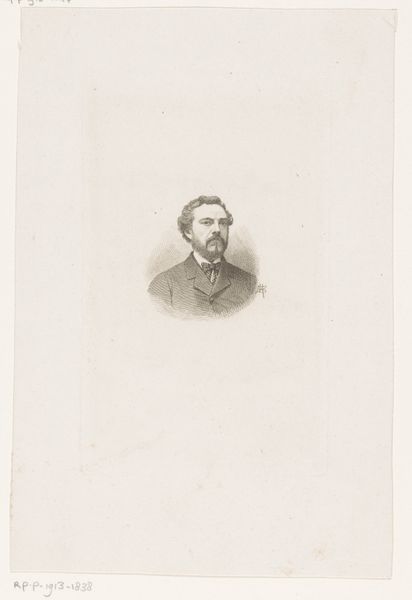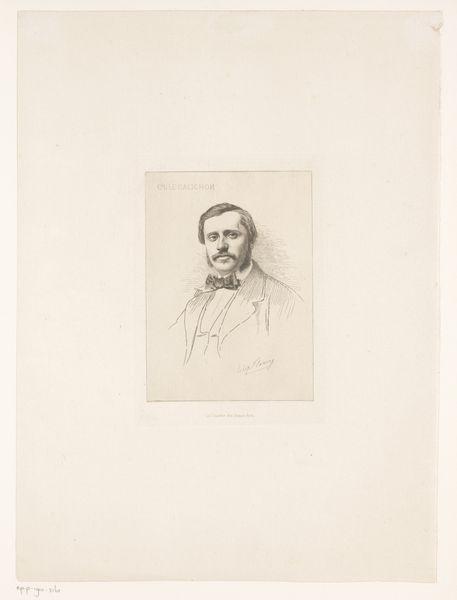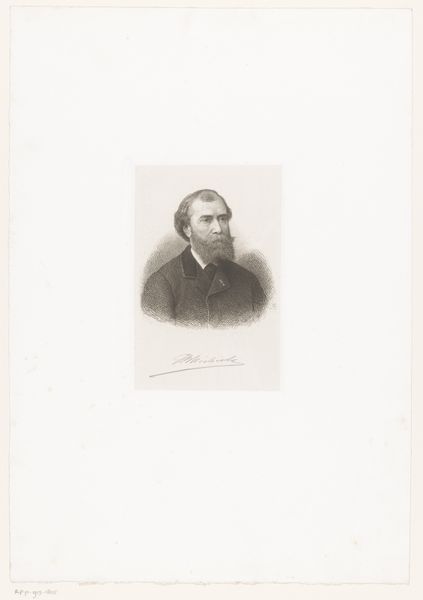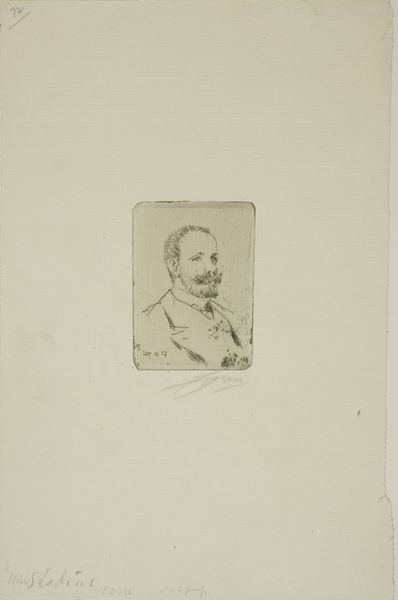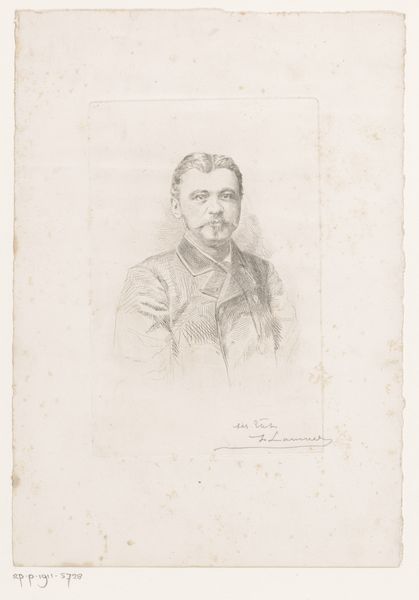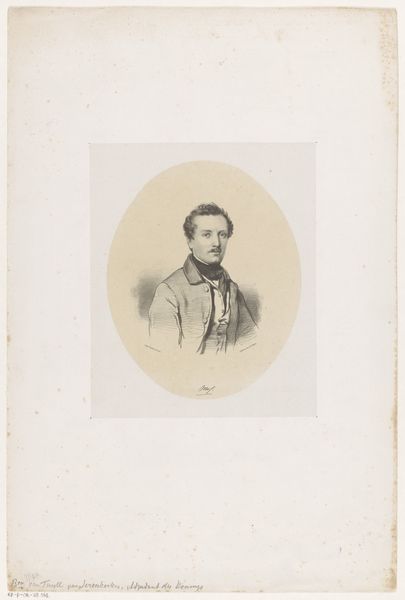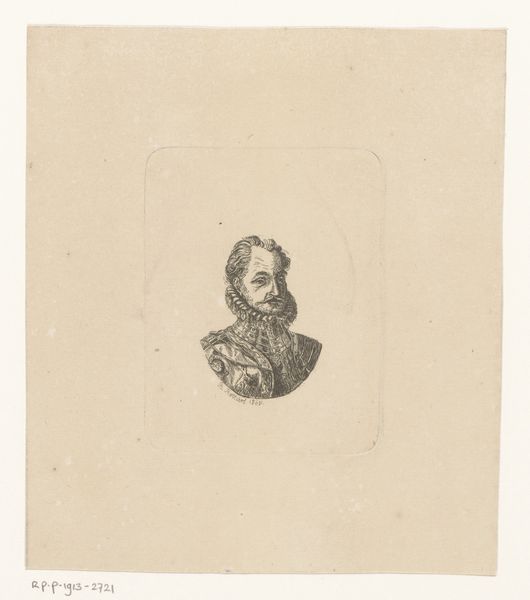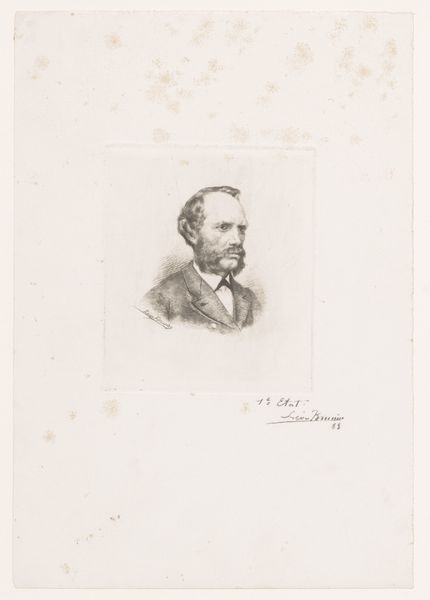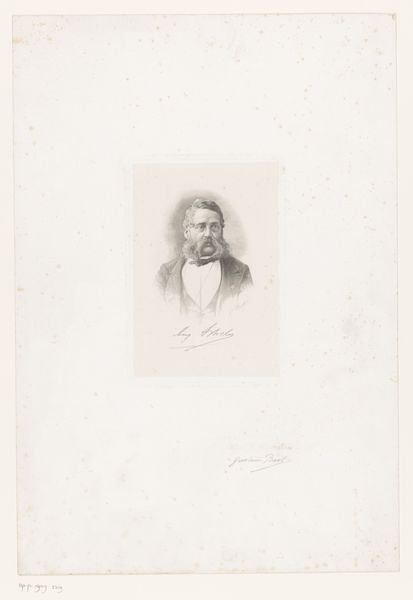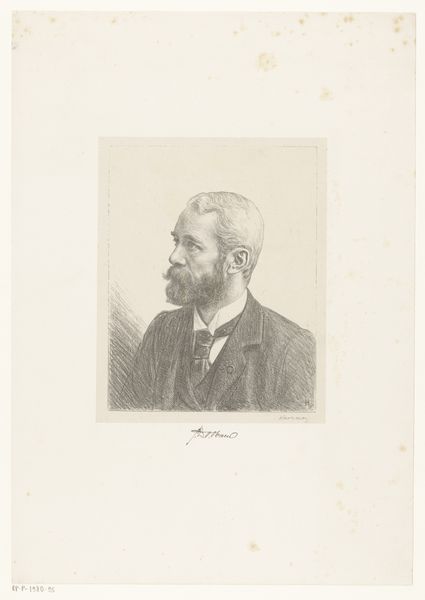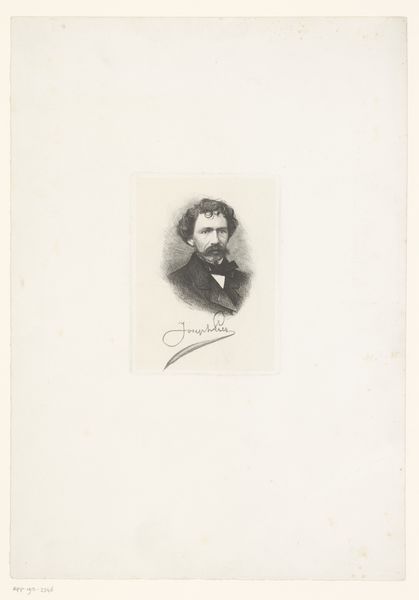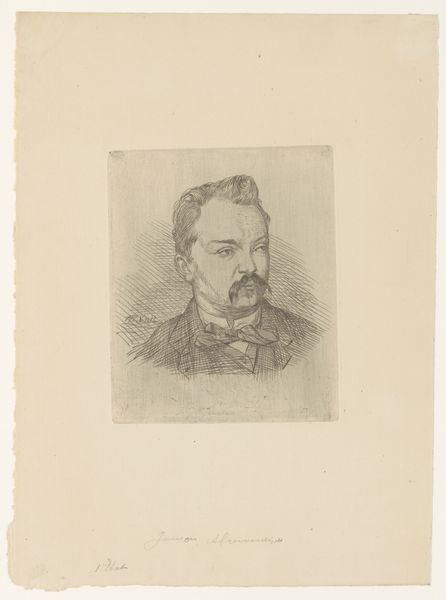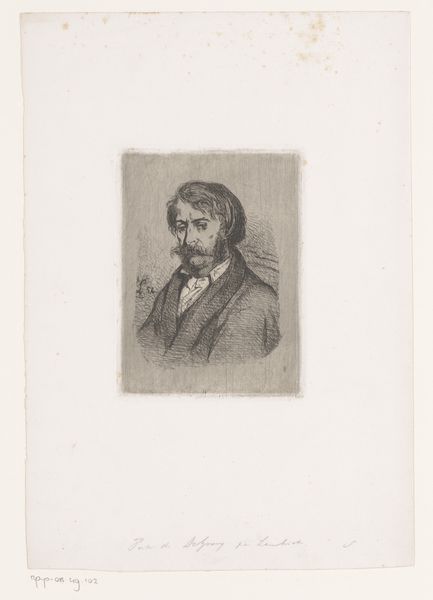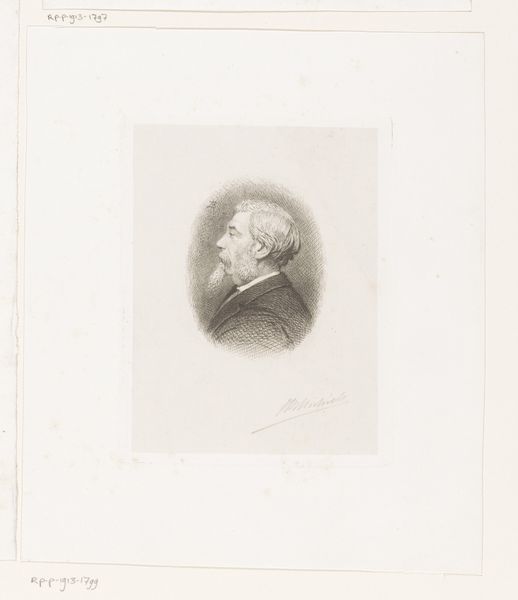
drawing, print, graphite, engraving
#
portrait
#
drawing
# print
#
graphite
#
engraving
Dimensions: height 191 mm, width 140 mm
Copyright: Rijks Museum: Open Domain
Curator: Before us is a portrait rendered with delicate precision, an engraving made by Fréderic Auguste La Guillermie between 1851 and 1907. The subject is Franҫois-Joseph Duret. Editor: It's quite a severe image. He has a very direct gaze and a hint of a frown. The subtle lines almost give him a haunted quality. Curator: It’s interesting that you see severity. During this period, portraits were often commissioned as emblems of status. Duret, we know, was a sculptor, so such depictions played a crucial role in the art world's visual economy, cementing reputations and shaping public perception. Editor: Yes, and that sculptor's identity might inform some of his imagery. Note his carefully groomed beard and neatly tailored jacket with what seems to be a lapel pin – all contribute to the established archetype of the 19th-century professional. One cannot dismiss the pin. Its a symbol denoting achievement that surely informed public perceptions and possibly aspirations, even if on a subconscious level. Curator: Precisely! And engravings, as reproducible images, democratized access to portraiture. Rather than a unique painting, this print allows for wider circulation and, therefore, influence. Its existence suggests the development of a more diverse, though not altogether more egalitarian, art world. Editor: So this portrait does not serve as only a likeness, but becomes part of his continuing narrative; part personal and part projected out toward an ideal. Considering he worked in stone, do you suppose he had opinions about the new technologies enabling printed portraits? Curator: I would think that like all creatives, he regarded its democratizing power as essential to art appreciation, but possibly threatening to the individual artist. Editor: Well, this deep dive has left me considering my assumptions. Thank you for sharing your historical perspective. Curator: Likewise. It's vital to see artworks as participating within wider visual and material cultures.
Comments
No comments
Be the first to comment and join the conversation on the ultimate creative platform.
